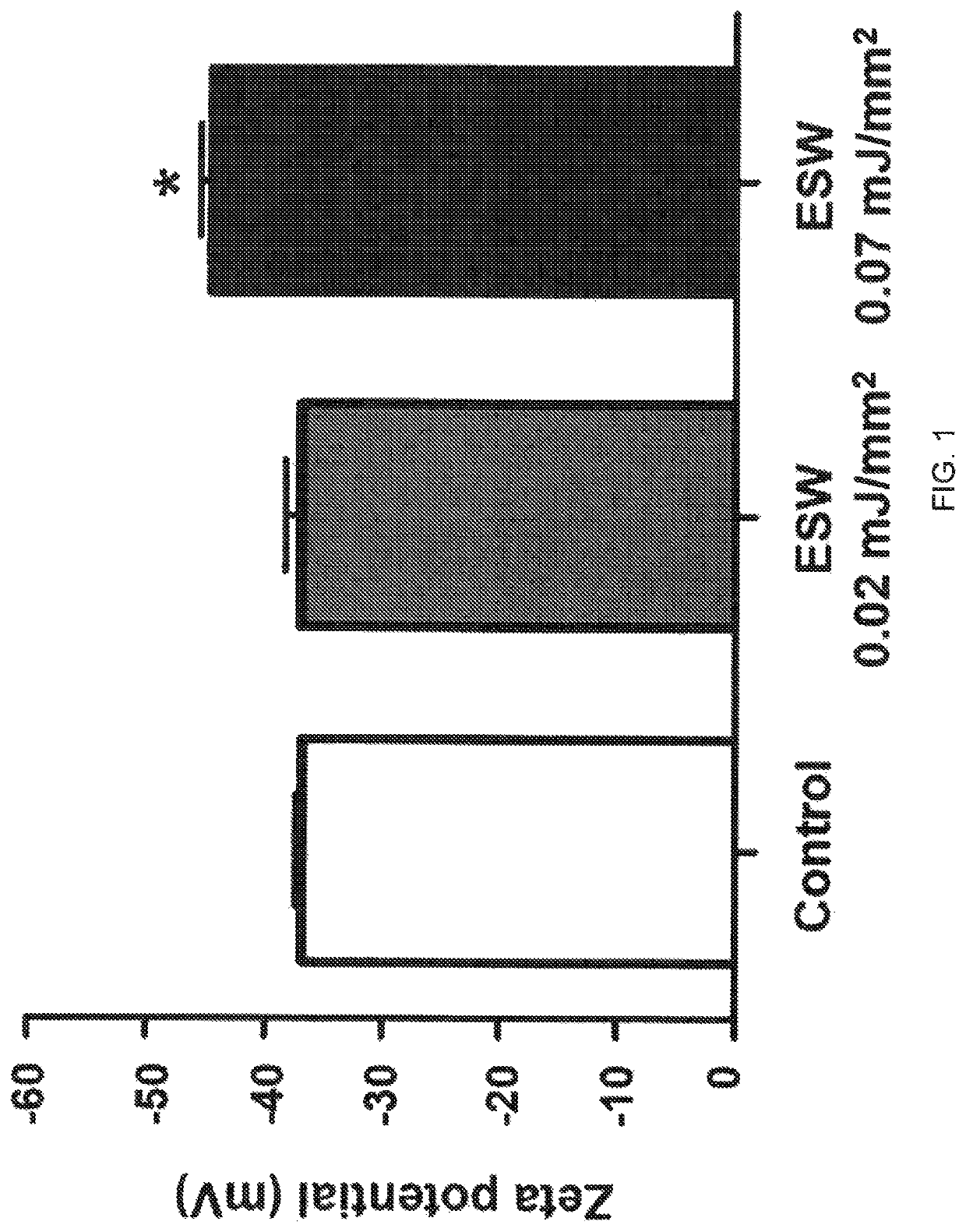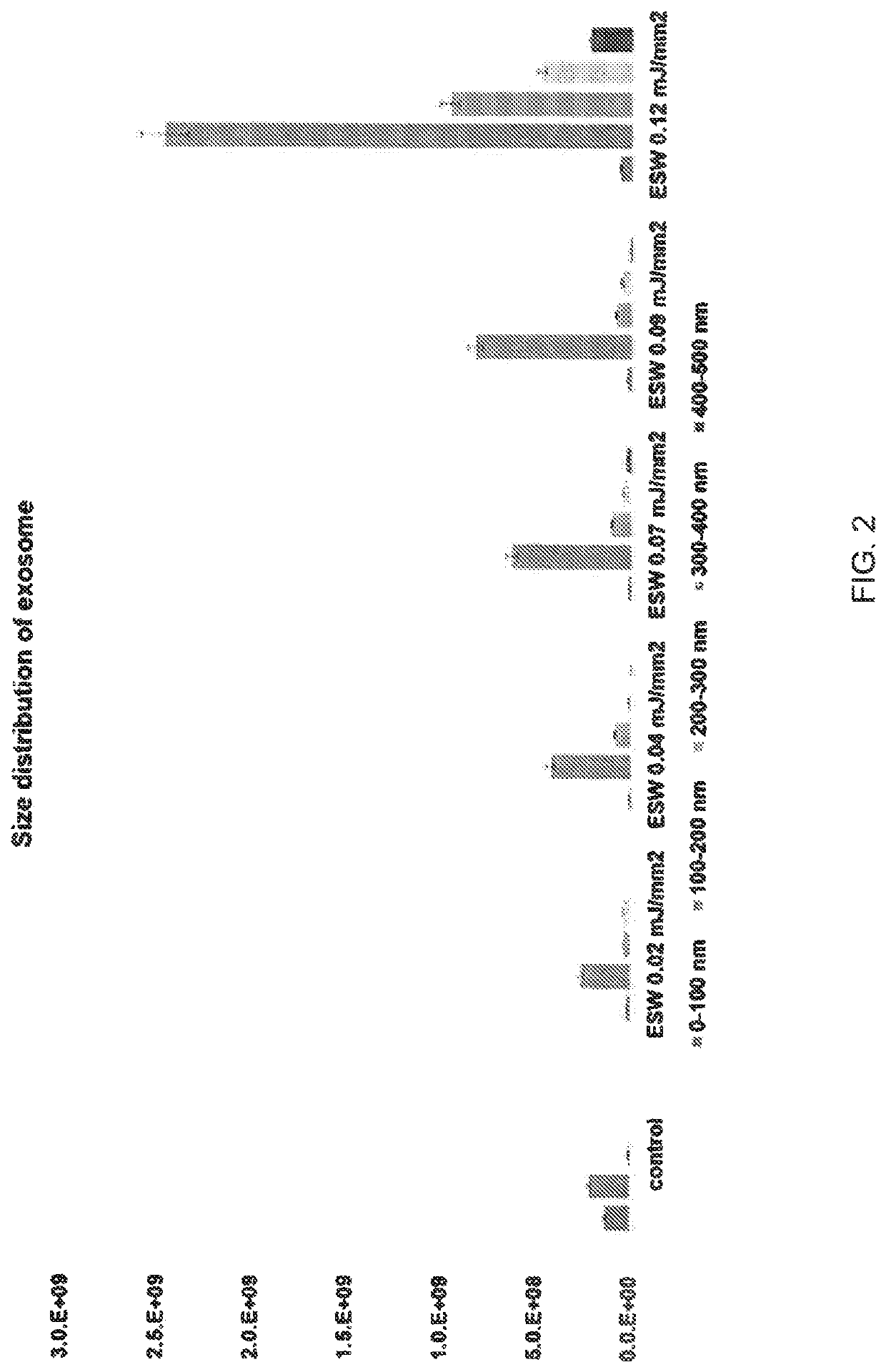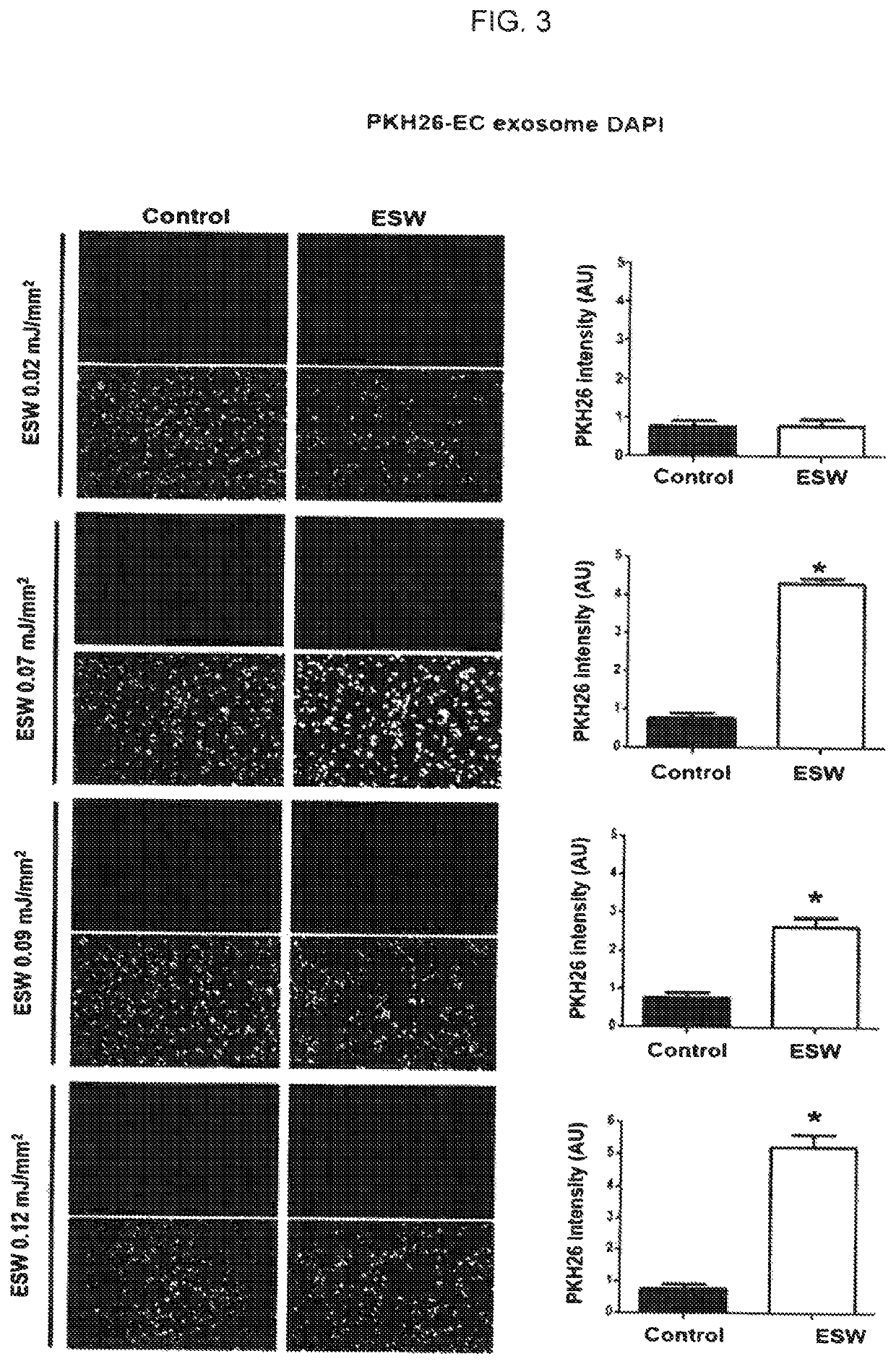Delivery method of target material into extracellular vesicles using extracorporeal shockwave
a delivery method and target material technology, applied in biochemistry apparatus and processes, microcapsules, enzymes, etc., can solve the problem of not revealing the mechanism of using extracellular vesicles, and achieve the effect of high efficiency and increased incorporation ability of target material-introduced extracellular vesicles into target cells
- Summary
- Abstract
- Description
- Claims
- Application Information
AI Technical Summary
Benefits of technology
Problems solved by technology
Method used
Image
Examples
example 1
of Exosome
Isolation of Exosome Derived from Various Cells (HUVEC, MSC, and VSMC)
[0052]In order to isolate exosomes derived from human umbilical vein endothelial cells (HUVECs), HUVECs were incubated in M200 medium including 5% FBS and 1% antibiotic / antifungal agent at 5% CO2 and 37° C. In this Example, the cells were sub-cultured on a plate having a diameter of 10 cm every 2 days to 3 days. In order to isolate exosomes from the cells, the debris of the medium was removed, and then exosomes were isolated using a syringe filter having a size of 0.2 mM pore. The exosome isolation experiments were performed using exosome-removed FBS centrifuged at 32,000 rpm for 1 hour and 30 minutes. The isolated exosomes were centrifuged at 3,000 g for 30 minutes, concentrated, and used after confirming by nanoparticle tracking analysis (NTA).
[0053]In order to isolate exosomes from the mesenchymal stem cells (MSCs) or the vascular smooth muscle cells (VSMCs), only MSC or VSMC was used as the isolating...
example 2
Exosome's Physical Properties by Extracorporeal Shockwave Treatment
2.1 Confirmation of Change of Exosome Zeta Potential by Extracorporeal Shockwave Treatment
[0058]Experiments were conducted to measure the change of zeta potential, which is particle's surface potential, depending on energy levels of extracorporeal shockwave in order to confirm the change of exosome's physical properties when applying extracorporeal shockwave.
[0059]The isolated exosomes which were derived from HUVEC were included in 1×1010 cells per well for each experimental group. The experimental group was untreated with the extracorporeal shockwave or was treated with the extracorporeal shockwave having an energy level of 0.02 mJ / mm2 and 0.07 mJ / mm2. Change of zeta potential of the exosome dispersion solution with or without extracorporeal shockwave treatment was measured using ELSZ-2000 device (Otsuka Electronics Co., Ltd.), which is a device for measuring zeta potential. The results are illustrated in FIG. 1.
[00...
example 3
ion of Various Target Materials into Exosome by Extracorporeal Shockwave and Confirmation of Transformation Thereby
3.1 Introduction of siRNA (siGlo) into Exosome by Extracorporeal Shockwave and Confirmation of Transformation Thereby
[0065]The extracorporeal shockwave can be used to introduce various target materials into exosomes with excellent efficiency. The exosomes into which the various target materials were introduced were treated with the extracorporeal shockwave to confirm whether incorporation into other cells also increases, thereby delivering the target materials into the desired cells. An experiment was conducted in which the target material was siGlo, one of the siRNAs. 50 nM siGlo labeled with the red color and exosomes derived from HUVEC, vascular endothelial cell, isolated in Example 1 were mixed. In control groups, there were no extracorporeal shockwave treatments. In addition, extracorporeal shockwave treatments were performed with various energy levels at 0.02 mJ / m...
PUM
| Property | Measurement | Unit |
|---|---|---|
| peak pressure amplitude | aaaaa | aaaaa |
| pressure | aaaaa | aaaaa |
| diameter | aaaaa | aaaaa |
Abstract
Description
Claims
Application Information
 Login to View More
Login to View More - R&D
- Intellectual Property
- Life Sciences
- Materials
- Tech Scout
- Unparalleled Data Quality
- Higher Quality Content
- 60% Fewer Hallucinations
Browse by: Latest US Patents, China's latest patents, Technical Efficacy Thesaurus, Application Domain, Technology Topic, Popular Technical Reports.
© 2025 PatSnap. All rights reserved.Legal|Privacy policy|Modern Slavery Act Transparency Statement|Sitemap|About US| Contact US: help@patsnap.com



